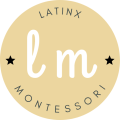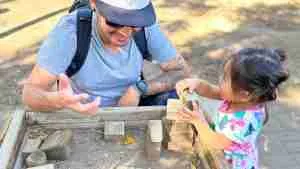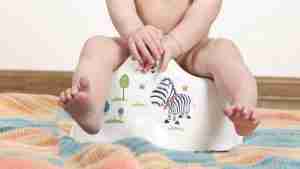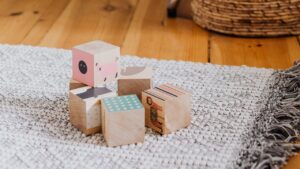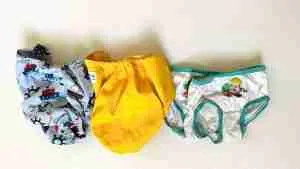
What is Montessori Play? And why it works

*Disclosure: I only recommend products I would use myself and all opinions expressed here are our own. This post may contain affiliate links that at no additional cost to you, I may earn a small commission. Thank you for your support!
Share this post
What is Montessori play?
Montessori play is a method that helps children learn practical life skills in a fun and engaging way. Activities are done because a child enjoys them, not to accomplish an end goal.
Maria Montessori said, “Play is the work of the child,” which means that when children play, they naturally nurture their curiosity about the world around them while still having fun.
For example, my daughter likes to help us clean, cook, garden, and build new furniture for her Montessori playroom.
While this requires a lot of work, she is having fun and refining her motor skills, concentration, and other life skills naturally.
When you give your child freedom to explore, they will naturally gravitate towards things that interest them and organically feed their developmental desires.
I am going to help you help your child nurture their development through play.
Montessori approach to play
Play is a fundamental part of your child’s learning journey.
I’ve been implementing the Montessori method at home from birth and I’ve come to appreciate how Montessori views play as a gateway to exploration and discovery.
Instead of simply seeing play as recreation, you must see it as a vital tool for your child to develop their skills and understanding of the world around them.
Montessori play emphasizes hands-on learning.
Instead of relying solely on toys with predetermined functions, Montessori play encourages children to engage with open-ended materials that spark their curiosity and creativity.
In our home, we provide natural toys like wooden blocks, puzzles, and sensory bins, which allow our daughter to experiment and problem-solve in a way that feels organic and unrestricted.
So instead of dictating how playtime should unfold, aim to create an environment where your child feels empowered to follow their interests and explore at their own pace.
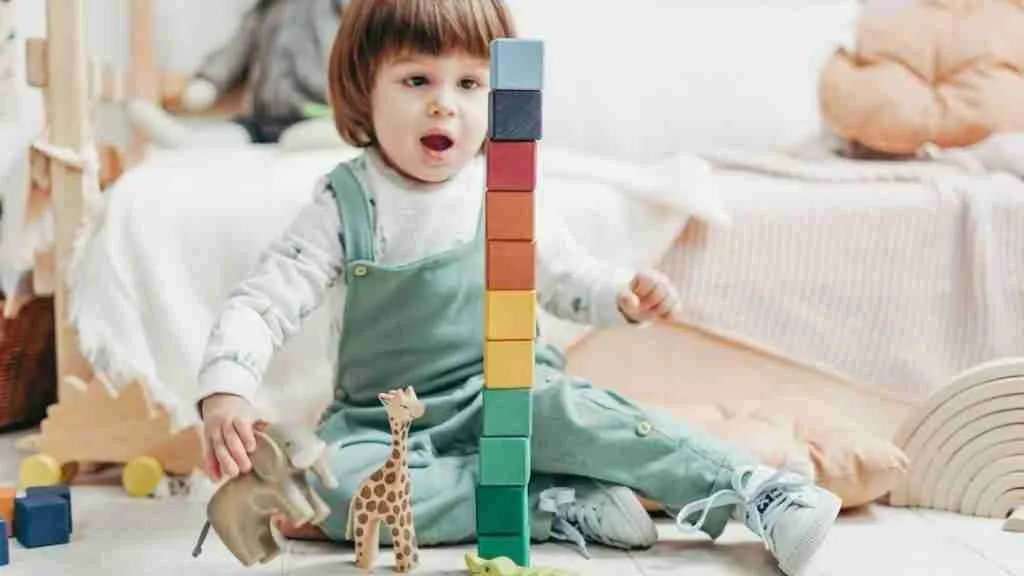
Focus on the process, not the result
Montessori play isn’t about reaching a specific goal or outcome but rather enjoying the journey.
Children learn best when they’re fully engaged in the process rather than fixated on the result.
For example, when our daughter was learning how to pour water from one container to another, she was not focused on pouring all of the water into the container without spilling it.
She was enjoying the sensory experience and refining her motor skills in the process.
Also, when she’s engaged in practical life activities like sweeping the floor or washing dishes, she’s not just completing chores but actively participating in meaningful tasks that contribute to her independence and self-sufficiency.
Let your child choose their play
Letting your child choose their own activities improves their independence and empowers them to take ownership of their learning journey.
Instead of controlling what they should learn or how they should play, simply provide your child with the tools and opportunities to explore and discover the world around them on their own terms.
We’ve witnessed firsthand the benefits of allowing our daughter to select her play materials and activities.
Whether it’s completing a new puzzle or pretending to cook up a meal in her play kitchen, our daughter thrives when we give her the freedom to follow her interests and curiosity.
All of the skills she is learning through play will serve her well in the years to come.
Let your child use their imagination
Montessori normally does not include fantasy play but this doesn’t mean that you should stop your child from using their imagination.
Imagination allows children to dream, create, or find solutions to complex problems.
One of the ways we’ve seen this play out in our own home is through open-ended toys and materials that allow our daughter to engage in imaginative play.
She builds structures with wooden blocks and creates tents for her toys using a blanket and her Pikler triangle.
She uses her imagination to create things that maybe I wouldn’t have thought of. So let your child imagine because this allows them to think critically and solve problems.
Make play fun and engaging
The best thing about Montessori play is that it is natural, fun, and engaging.
Unlike traditional approaches that may rely on external rewards or incentives to motivate children, Montessori play encourages kids to engage in activities simply because they enjoy them.
As a parent, I think it is truly heartwarming to witness our child’s genuine enjoyment and passion for play and this reminds me of the true essence of childhood.
So instead of checking off boxes or meeting academic milestones, just allow your child’s curiosity to run wild because this fosters a love for learning and exploration that will last a lifetime.
Types of Montessori play
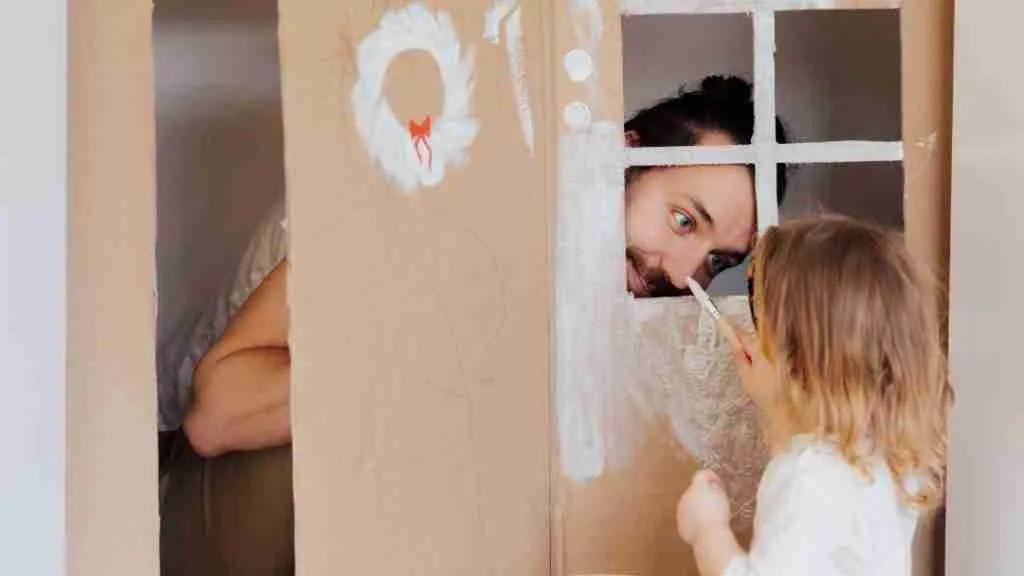
Object Play
Object play is a fundamental aspect of the Montessori approach, where your child engages with physical objects to explore, manipulate, and understand the world around them.
This type of play emphasizes hands-on learning and the use of specially designed materials to support your child’s development.
For infants and toddlers, simple objects like wooden blocks, rattles, and sensory balls provide opportunities for sensory exploration and fine motor development.
As children grow older, they may progress to more complex materials like puzzles, stacking toys, and shape sorters, which challenge their problem-solving skills and spatial awareness.
Pretend Play
Pretend play fosters social, emotional, and creative development and is a natural and essential part of your child’s learning journey.
You will notice your child engage in pretend play by taking on different roles and exploring various scenarios.
You can support pretend play by providing your child with open-ended props and tools that encourage them to use their imagination and creativity.
If you have an infant or toddler, simple items like scarves, soft dolls, and play kitchen sets can spark imaginative play and allow them to role-play daily activities.
As your child gets older, they may enjoy more elaborate pretend play scenarios, such as playing “house,” “doctor,” or “store,” which encourage cooperation, communication, and problem-solving.
Physical Play
Physical play is a vital component of the Montessori philosophy because it promotes your child’s physical, emotional, and cognitive development through movement and active engagement with their environment.
You can support your child’s physical development with simple activities like tummy time, crawling, or playing with soft balls and toys to encourage gross motor development.
Older children may enjoy more structured physical play activities, such as running, and dancing, or outdoor games like tag or obstacle courses.
Sensory Play
Sensory play gives your child rich opportunities to explore and engage with their senses through hands-on experiences.
This type of play is crucial for newborns and infants because it stimulates one or more of the five senses: sight, hearing, touch, taste, and smell.
Montessori materials often incorporate sensory elements, such as textured fabrics, natural materials like sand and water, and scented items like herbs and food.
These materials provide children with diverse sensory experiences and further stimulate their senses.
When your child explores different textures, sounds, tastes, and smells, they learn to process sensory information and build a foundation for more complex cognitive skills.
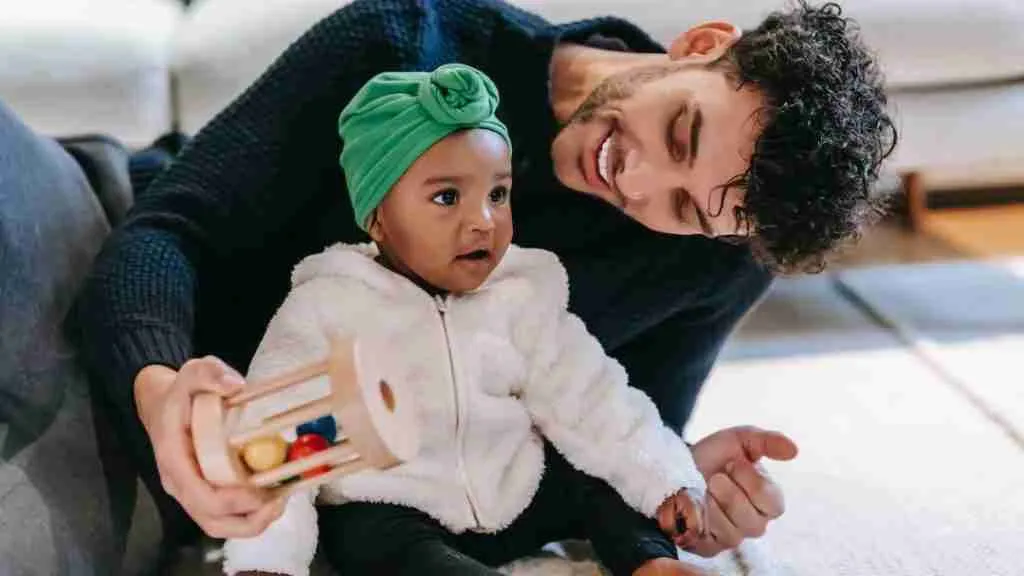
Examples of Montessori play
Here are some ideas of Montessori play activities for various ages that you can do in your home:
- Sensory bin: Fill a shallow container with materials like rice, pasta, or water and provide scoops, funnels, and cups for sensory exploration.
- Treasure baskets: Fill baskets with a variety of safe, natural objects with different textures, shapes, and sizes for infants to explore through touch.
- Montessori mobiles: Hang simple, visually stimulating mobiles above your infant’s play area to encourage visual tracking and focus.
- Mirror play: Place child-safe mirrors at different angles to encourage self-discovery and exploration of facial expressions and movements.
- Object permanence box: Introduce an object permanence box with a ball or object that disappears and reappears to help your infant understand object permanence.
- Stacking rings: Offer wooden or plastic stacking rings so your infant practices hand-eye coordination and fine motor skills.
- Puzzles: Provide simple wooden puzzles with knobs for toddlers to manipulate and fit pieces together to develop problem-solving skills and spatial awareness.
- Nature walks: Take nature walks to explore the outdoors, collecting leaves, rocks, and sticks for sensory exploration and observation.
- Practical life activities: Involve your child in everyday tasks like pouring water, transferring objects with tongs, or sweeping with a child-sized broom to promote independence and fine motor skills.
- Open-ended art: Offer a variety of art materials like crayons, markers, paint, and clay for your child to express their creativity freely, without specific instructions or templates.
What to do next?
Montessori play has a purpose, and that is to help your child develop lifelong skills naturally. The activities I provided above are great examples of play that your child can do at home.
Remember to always follow your child, so encourage them to explore, experiment, and follow their interests independently.

Hello, I am Leslie. I am on a mission to help you support the growth and development of your child. With the right tools and proper guidance, you can navigate parenthood with confidence and assertion! My goal is to equip you with knowledge to help you construct a strong foundation for your child’s life.
Suggested articles
You May Also Like
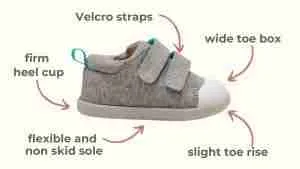
5 Best Shoes For New Walkers: Podiatrist Approved
The best shoes for new walkers are the First Walkers by Ten Little. because they are approved by the American Podiatric Medical Association (APMA).

Minimalist Baby Essentials: Ultimate Checklist
We created this complete minimalist baby essentials checklist for your baby’s first months of life. These items will ensure the safety and comfort of your baby.
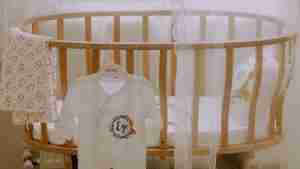
Mini Crib VS Crib: Differences, Cost, Pros & Cons
We researched various high-quality cribs and mini cribs to compare the price, versatility, longevity, size, and pros and cons.
